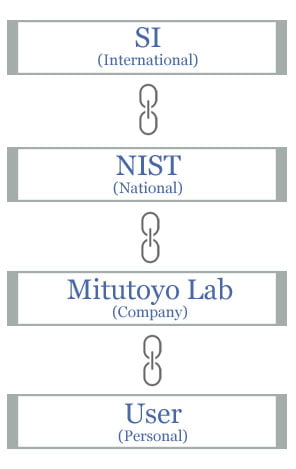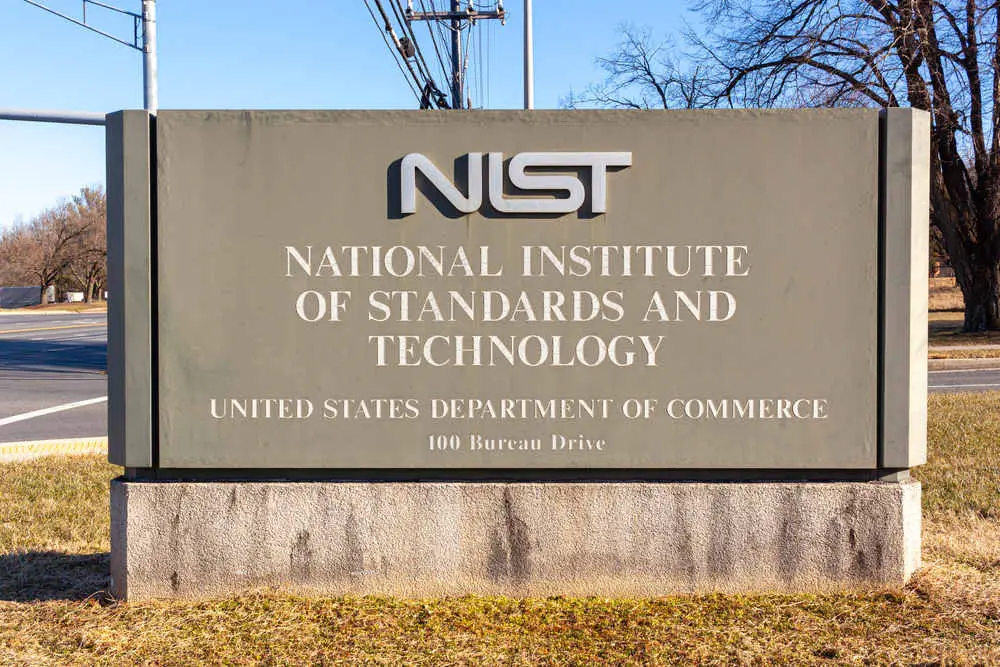Measurement traceability or the fancy term “metrological traceability” is an important element in relation to accuracy. Someone may claim they are accurate, however, without measurement traceability, it’s just a claim. If you are going to hire a calibration service for your measuring instruments, this is an interesting topic for you. You have to make sure they are traceable to the SI unit.
Measurement Traceability in Metrology Vocabulary
According to International Vocabulary of Metrology – Basic and General Concepts and Associated Terms (VIM) 3rd edition, metrological traceability is
property of a measurement result whereby the result can be related to a stated reference through a documented unbroken chain of calibrations, each contributing to the measurement uncertainty.
Based on the meaning of metrological traceability and its points from 1 to 7, we can conclude that there are 4 important terms:
- The result is the measuring reading that is generated by the measuring instrument. It comes with value and unit.
- Stated reference is the measurement standard in instrumentation; can be reference material in chemistry and clinical analysis. There is called a calibration hierarchy.
- Documented calibration. The calibration on each level of the calibration hierarchy must be documented. The document contains some information such as calibration expire date and uncertainty value.
- Uncertainty. The document must contain this data. It’s important because the longer the traceability (the lower it is in the hierarchy), the lesser the accuracy.
So, What is Measurement Traceability?
Simply, measurement traceability is the state of whether the measuring result (not the measuring instrument) can be traced back to the measurement standard of SI or not.
Someone may carelessly claim that their measuring reading is as 1 meter as the 1 meter of SI, for example. To convince further, they said that it has been calibrated. In this case, you should not trust them easily until you ask several questions.
That is because their 1-meter version could be Mars’s version, not Earth’s version. Who knows? You have no something to compare with. You don’t have the SI standard; the reference standard for length is light.
These questions can help you that the measurement result may have no traceability.
- Where is it calibrated to? – No calibration simply means no traceability.
- When is the calibration? – Calibration expires, the traceability ends.
- Is the calibrator calibrated too? – Surely the calibrator must be calibrated.
- If the calibrator calibrated, is it calibrated to traceable standard? – No traceability if the standard is not traceable.
- Where is the certificate calibration? – We need to assure the calibration is real. Again, no calibration means no traceability.
- Is the uncertainty calculation attached in the certificate? – Calibration takes uncertainty into account as well. You can see it in the calibration report.
Traceability Hierarchy
It’s unpractical for you to calibrate your length measuring tool to light (the primary standard of length). Conversely, gauge block (the secondary standard of length) is practical. Gauge block is made of highly stable material. Even though it has thermal conductivity, it’s very less.
The gauge block itself has several grades. The finest grade has the highest accuracy but is complicated to take care of. Thus, it becomes the highest standard down after light. NMI level such as NIST makes use of this grade. The lower grade then is used in the laboratory of calibration company. Further, your workshop or private laboratory uses the lowest block grade.
When you calibrate the gauge block externally (hiring a calibration company), the external calibration laboratory performs calibration by comparing their gauge block (higher accuracy) with yours (lower accuracy) using a comparator. And at a regular time frame, your external laboratory’s gauge block is calibrated to NMI. And NMI’s standard is calibrated to SI. This pattern forms a traceability chain from your measurement result to SI (primary standard). As long as there is no missing link, traceability exists.
As it transfers the true value from reference standard to NMI standard, then to laboratory standard, and finally to your workshop standard, this sequence makes up a calibration hierarchy.
This hierarchy, in the end, increases the uncertainty value of the measurement result. The chain gets longer, the uncertainty value gets bigger. Then, it forms a pyramid shape called traceability pyramid.
What if I calibrate my instrument right to the NIST?
You can but it is overkill. It charges you more money as well. You should know the accuracy level that you need. For example, calibrating a skinfold caliper using a NIST gauge block standard is something you have to avoid.
List of NMI (National Metrology Institute) in the World
In most cases, when you are buying a micrometer in the US market, for example, you may be offered an additional traceability certificate to NIST. What is that?
As said before, the hierarchy puts NMI at the second level. They hold the secondary standard. In the US, the NMI is NIST. In order for the measurement result traceable to SI, it has to be traceable to NIST.
This is a list of NMI of each country:
- US: NIST (National Institute of Standards and Technology)
- Canada: NRC-INMS
- Mexico: CENAM
- UK: NPL
- Germany: PTB
- SWITZERLAND: METAS
- ITALY: INRIM
- SWEDEN: SP
- HUNGARY: MKEH
- JAPAN: NMIJ/AIST

And if you generate a measurement result using that micrometer, the measurement result is traceable to NIST. In other words, traceable to SI.
International Standard Reference (SI) >> National Standard Reference (NIST) >> Mitutoyo America Calibration Lab Masters (Company Lab) >> End Users (Human)
The link might be longer than the link above. It depends on the institutes that involve. The shorter the links, the better due to lower uncertainty.
Accredited Calibration Laboratory to ISO 17025
When you have a plan to calibrate your instrument to a traceable laboratory so that you get a traceable measurement, you can rely on a laboratory that is accredited to ISO 17025. The ISO-17025 is a set of rules that forces the labs to be traceable to SI.
However, this is not mandatory. As long as you can audit, you then can decide to rely on them or not. Surely, auditing takes time and requires skill. On the other hand, relying on an accredited laboratory can save you time and effort.
Final Thought
Traceability and accuracy cannot be separated. To be stated as accurate, the one meter of a particular measurement must be one meter of the agreed value (one meter of the International Reference Standard). Even though there is much doubt that both results are 100% identical, this doubt can be calculated and presented in an uncertainty value.
Traceability can have a broad translation. In this post, we are talking about measurement traceability, or metrological traceability, or traceability in measurement.
If one link of the chains is broken, the measurement is simply questionable.
Measurement traceability can also mean a guarantee of the accuracy of your measurements. Someone may easily claim their measurement is accurate. Measurement traceability can reveal it.
Unlike repeatability that you can measure, traceability cannot. You can make use of the calibration certificate to check its traceability.

